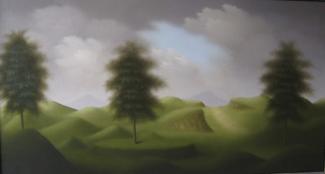
A first book workshop organized by Dr. Stefan Sunandan Honisch
Banting Postdoctoral Fellow, Department of Theatre and Film, University of British Columbia
Vulnerable Virtuosities: Disability in Competition and Concert explores how descriptions of musical virtuosity in competitions and concerts depend on idealized notions of musical ability shaped, in turn, by the systemic privilege and oppression that intersect race, gender, sexuality, disability, and class. Both the concert circuit and the competitive arena leave disabled pianists vulnerable to juries, critics, and audiences who take disabled embodiment to be a distraction from musical experience. Reacting to this negative framing of corporeal difference, disabled pianists sometimes internalize its normative assumptions, by separating their disability from their musical abilities. Anchored in a Critical Disability Studies approach, my book project theorizes vulnerable virtuosity as an open-ended relationship through which norms governing music-making and reception are challenged by the continual formation and dissolution of communities of practice that refuse familiar distinctions between public and private musical experience, and between formal and informal knowledge. The monograph focuses on the lives, careers, and reception of blind pianists who have participated in the professional and amateur streams of the Van Cliburn Piano Competition: Judyth Walker (1947-2009); Debra Saylor (b. 1962); Tamas Erdi (b. 1979); and Nobuyuki Tsujii (b. 1988). The book also discusses the work of blind African-American pianist, composer, and teacher Marcus Roberts (born 1963). Roberts himself is the laureate of two competitions, the Great American Piano Competition in 1983, and the inaugural Thelonius Monk International Piano Competition in 1987.
The first chapter’s central question is: to what, and to whom are virtuosic bodies vulnerable in the competitive sphere, and in public musical life? Negative assessments of the potential of blind pianists to become virtuoso musicians—often by blind pianists themselves—underscore the role of institutions in tethering disability to representations of vulnerability that emphasize the supposed weakness and dependence of disabled people upon the good will and tutelage of non-disabled people. To answer this chapter’s central question, I survey the landscape of blind pianists who have established an active presence in concert and competition since the eighteenth century. Expanding the first chapter’s theoretical frame, the core question in the second chapter is: how do the exacting demands of concert and competition performances amplify and enlarge sociocultural anxiety about disablement? The relational practices of performance and reception, I show, are guided by the imperative to avoid being distracted by tangible signs of disabled embodiments, yet this tacit rule is challenged at every turn by the sheer variety of experiences and priorities that disabled musicians and audiences bring to the performance encounter. The third chapter explicates the competing identities which shape expressions of vulnerable virtuosity in disabled embodiment. Here I develop an intersectional analysis that considers how the lives and careers of blind virtuoso pianists are shaped by structures of privilege and oppression, circumscribing their movements on and off stage, in education, in public concert life, and in the competitive arena. The fourth chapter asks how longstanding debates in philosophy and theology shape present-day understandings of disabled virtuoso musicians as signs of divine presence. To conclude, the fifth chapter asks how new technologies, including concert and competition webcasts destabilize vulnerable virtuosity in productive ways, creating new spaces for musical becoming. I presented a paper based on a draft of the book’s fourth chapter for the Canadian University Music Society, as part of Congress 2019 at the University of British Columbia. This book expands my doctoral dissertation, an interview-based study of Nobuyuki Tsujii’s reception as part of “Beyond the Screen: Disability and the Arts,” an informal educational series at the University of British Columbia in 2013, that I helped organize together with a team of faculty, staff, and graduate students.
This First Book Workshop organized through the IHRC was intended to promote interdisciplinary conversations among UBC faculty and students about the issues raised in my monograph project: the normalization of virtuosity in public musical life; the increasing reliance on digital platforms for music; and the ways in which race, gender, disability, and sexuality intersect in the critical and popular reception of pianists on the concert circuit, and in the competition arena. An important goal of the workshop was to continue the conversations that began in earnest in 2013 through the “Beyond the Screen: Disability and the Arts” series, and to explore how the concerns of IHRC may align in productive ways with other research clusters at UBC more specifically oriented towards disability. The Workshop was comprised of two events: "The Art of the Piano: Competition, Teaching and Performance, a Talk and Moderated Q&A" with Pianist Debra Saylor (Laureate, Van Cliburn Piano Competition for Outstanding Amateurs (22 January 2021), and the screening and discussion of "The Virtuoso: Marcus Roberts" on 26 January 2021. Please explore each link to learn more about each event.
Image: Martin Honisch, 2010, Oil on canvas